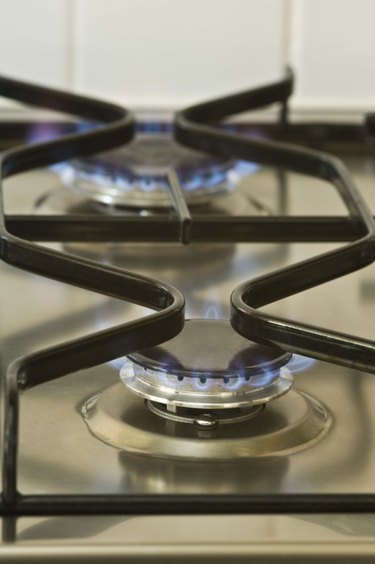
During colder months, heaters and furnaces work hard to keep families warm and comfortable. Regular maintenance of heating systems, components and elements can keep your family safe by preventing accidents caused by faulty equipment. Your gas regulator is an important component of your heating system, and if it's damaged in any way, it may lead to dangerous conditions in your home.
Description
Video of the Day
A gas regulator may be used in environments heated by natural gas and propane gas. The gas regulator is the component of a heating or gas-piping system in a home that regulates the flow and pressure of gas in pipes as controlled by your thermostat. The gas regulator is responsible for initiating heat flow from your furnace or heating system and shutting it off when set point temperatures are reached.
Video of the Day
Function
The main function of the gas regulator is to provide intake of natural or propane gas coming in from a main line into the piping lines for your home. The gas coming from a main line is under high pressure. The gas regulator controls flow from a high rate of pressure to a lower rate of pressure in the service line suitable for operating home heating systems and appliances.
Gas
If your gas regulator safety valve is not working properly, it may fail to detect through sensors whether a flame is lit in your heating system and, as a result, continue to produce gas into the home environment rather than shutting off, which it's normally designed to do. In such cases, gas vapors may leak into the home. Natural gas smells like a rotten egg, says Colorado Springs Utilities, and may cause symptoms such as lightheadedness, nausea, and coughing. If enough gas builds up, a spark or flame may ignite the gas vapors, thereby leading to an explosion.
Pressure
According to the American Gas Association, normal pressure for gas coming into a home ranges from one-quarter pound to 60 pounds, and gas line pipes are typically an inch to less than an inch in diameter. However, at the meter, gas passes through yet another gas regulator, which reduces pressure to less than one-quarter pound of pressure in most scenarios. A faulty regulator at that point may allow more gas pressure into the home than is necessary, leading to dangers of gas surges or gas leaks.
Gas Flow
Check your appliances have adequate gas flow by observing the color of the flame on your stove or furnace pilot light. Gas stove flames should be nearly blue, while yellow flames are a good indication that your appliance is not receiving adequate gas and may be emitting dangerous fume vapors.